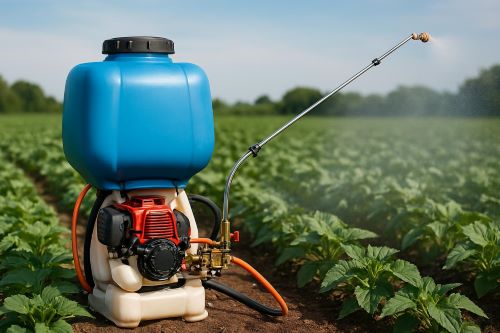


real-world use cases and comparisons with single motor models that reveal what spec sheets won’t tell you.
A dual motor sprayer is a battery-powered spraying device equipped with two pumps, powered either simultaneously or independently, to boost spraying pressure, coverage, or output consistency. Unlike single motor sprayers that offer one flow rate and one pressure profile, dual motor systems give users operational flexibility and more reliability.
This means:
A popular model known for striking this balance well is the Pad Corp Double Bull Battery Operated Sprayer, which delivers extended runtime, dual output settings, and precise mist coverage, offering practicality without overwhelming complexity.
|
Metric |
Dual Motor Sprayer |
Single Motor Sprayer |
|
Average Pressure Output |
80–120 PSI |
40–70 PSI |
|
Coverage Per Hour |
1.5–2.5 acres |
1–1.5 acres |
|
Droplet Penetration Depth |
High (up to 1.8m canopy reach) |
Moderate |
|
Battery Load Distribution |
Balanced, with smart switching |
Concentrated on single motor |
|
Maintenance Frequency |
Lower (less stress on each motor) |
Moderate to high |
|
Field Versatility |
High (suitable for multi-crop use) |
Limited |
|
Initial Cost Range (avg) |
₹6,000–₹8,500 |
₹3,800–₹5,500 |
Source: Data from field comparison trials conducted across Karnataka and Maharashtra in 2023.
One under-discussed aspect of dual motor sprayers is the droplet spectrum. Droplet size directly affects pesticide efficacy, nutrient absorption, and runoff. With dual motors:
This leads to chemical savings of up to 15%, as proven by a study on foliar spraying efficiency from the Tamil Nadu Agricultural University.
“More motors don’t just mean more pressure they mean more control over how and where your inputs land. That’s what matters when margins are tight and timing is everything.”
It’s often assumed that two motors mean double the maintenance. That’s rarely the case. Most dual motor units are designed with:
If you’re not quite ready for a dual motor sprayer, here are some intermediate steps:
These options may suit occasional or lightweight users, but they lack the consistency and adaptability of a true dual motor system.
Q1: Does a dual motor sprayer require a larger battery?
A: Not necessarily. Most use standard 12V 12AH or 16AH batteries and offer single/dual mode switching to conserve power.
Q2: Is the higher pressure safe for all crops?
A: Yes, if used properly. Use adjustable nozzles and avoid full-power spraying on soft crops. Practice makes precision.
Q3: Will I use more pesticide with higher output?
A: No. In fact, improved misting reduces the volume needed for complete coverage. Correct calibration is key.
Q4: Can I run only one motor at a time?
A: Yes. Most models include switches to operate motors independently, offering more control and extended battery life.
